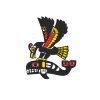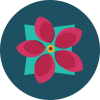Cowichan Valley Citizen / Lexi Banas / Aug. 22, 2018 4:30 p.m.
Rescue squads have been busy this summer moving fish fry from the small pools that are all that’s been left of the creeks flowing into Cowichan Lake.
Even rivers, like Mesachie Lake’s Robertson River, that can roar during the winter time, have become like stone highways lately so this is a rescue job that’s become more and more necessary as weather during July and August becomes hotter and drier.
Ken Traynor, the new president of the Cowichan Lake and River Stewardship Society, said Thursday, Aug. 9 that it’s been a labour of love for a group of concerned river and fish enthusiasts.
“There are many people that are more actively involved in it than I am.”

Volunteers at Lake Cowichan salvaging fry.
“It’s classic summer conditions,” he said of the Cowichan Lake watershed. “Right now, the only tributary running fully on the surface is Shaw Creek, and historically, it’s the only one that runs year round of the tributaries. It’s still a fantastic creek. It’s fed by a small lake at the Heather Mountain, Shaw area. So, it’s still flowing.
“In the Robertson, it’s dry. It runs really heavy [in the wet season]. At different times, they’ve taken gravel out of a couple of the bends to make sure it doesn’t flood. The BC Nature Federation has a program where they’ve been collaborating with Cowichan Tribes. They’re doing plantings on some of the gravel bars up there. It’s called ‘live staking’. They take cottonwood sticks, 10-12 feet long, and they embed them in the gravel bed below the water line. They sprout up right away from the nodes. The idea is to try and stabilize some of those gravel bars so they might be strong enough to turn the bottom of the Robertson River into a more sinuous flow.”
Logging higher up has had its effect, according to Traynor, so the wet season flow pattern on the Robertson is not as winding as it once was.
“Historically, that’s what it did, but as it’s gotten faster and faster and now it just runs through like a freight train. They’ve been doing work uphill there over the last couple of summers actually and it will be interesting to see if that helps.
“The more you can slow down the water, turn it into a more sinuous flow, the more you get the opportunity to get some back channels. Those areas are what’s key for the fry in the river, but now the river just pushes down all that gravel. This year, down at the north arm right by the estuary, when we had that big flow in January, and it threw up a huge pile of gravel and made it very difficult for the river to flow into the north arm. They are actually doing some things to try and counter that at this time because the north arm is very much where the fry go out. The north arm is really important.”
In the Cowichan Lake area, the fry rescue program is another collaborative effort that’s been involving a number of players, Traynor said.
The Lake Cowichan First Nation, Bob Crandall and the Cowichan Lake Salmonid Enhancement Society, and Sandy Cummings and Parker Jefferson from the Cowichan Lake and River Stewardship Society have all been busy.
“They do an awful lot of work and coordinate volunteers because they know most of the spots where the river starts to drop over time, where the pools are. And this year, given that we’ve had to go down to 4.5 cubic metres per second [the flow over the Lake Cowichan weir], you know those pools aren’t going to last.
“Volunteers have been going out for the better part of the last couple of months, in our case, once or twice a week. We just got a call from someone up on Mayo Creek who was worried about some he found there. It’s a group of people who’ve been working together on this for quite a while. I’m new to the Cowichan Lake area but it’s really interesting to see how many of these kinds of partnerships there are. It’s good to see.”
This will be continuing until we get some real rain, Traynor said.
“Historically, from my understanding of it, the coho and chinook especially are very much concentrated in the river from just below the Lake Cowichan weir down to the trestle. That’s where their really important spawning beds are. And those fry will move up into the lake as the river starts to drop in June. Then they spend the summer in the lake, along the edges, and then once the rains come and the river fills up again, and they move back to the river…using the lake as a refuge during the hot summer.”
The challenge now is what to do in the future.
***
See the full article at https://www.cowichanvalleycitizen.com/news/drought-has-volunteers-walking-cowichan-lake-areas-dry-rivers-and-creek-beds-looking-for-stranded-fish-fry/
 Email
Email



